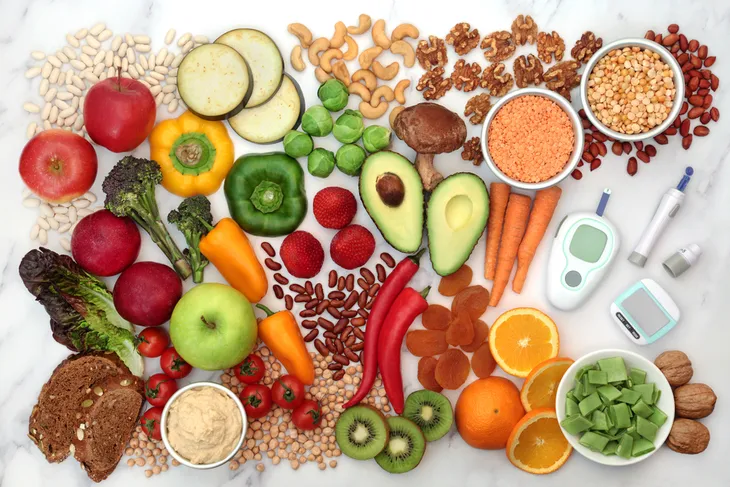While most things that affect type 1 diabetes are in our control like food choices and medication, seasonal changes are not one of them! It’s up to us to adapt if we want to get through them smoothly. Winter is one of those seasons that can wreak havoc, or at least place some extra burden on those living with diabetes. When the temperature drops we are forced to make some adjustments to our daily lifestyle and how we manage type 1 diabetes.
The lack of sunlight, physical activity, and motivation are arguably the hardest aspects of winter for people living with a chronic illness. Luckily, with some modifications to our regular dosing, a little mental health support, and maintaining a healthy routine, we can combat the negative effects of winter.
Changes in Medication
Generally, most people living with type 1 diabetes need more medication during the winter months due to less overall movement. This definitely rings true for me. A call or visit to the doctor or endocrinologist is recommended near the end of the fall to discuss a dosing approach for the winter. They may want to increase your overall basal rate, carb ratio, or perhaps both. Keep track of glucose levels near the end of the fall so as to better track what’s going on with your body and how it’s being affected by the cold.
The goal is to keep your glucose levels as in range as possible. It’s a lot easier to be the victim of diabetes burnout and suffer the negative mental implications of diabetes if blood glucose levels are all over the place due to seasonal changes.
Eat More Fresh Food
Most people living with an autoimmune disease are deficient in vitamin D. These levels can drop even lower during the winter due to lack of sunlight. It’s a good idea to take a supplement at least during the winter months to maintain normal levels which will also help maintain a more stable and happy mood.
You should also incorporate more fruits and vegetables into your diet during the winter. Eating fresh nutrient dense foods will help increase energy levels and overall health. The fiber contained in these foods will also help stabilize blood glucose levels and keep digestion running smoothly. (Here are some more Diet Tips for Type 1 Diabetes).
Mental Health
Living with a chronic illness makes one much more susceptible to anxiety and depression. Being mindful of your mental health throughout the winter is key to avoiding seasonal depression. Checking in with yourself and having support systems in place for those days when you do find yourself in a rut can make all the difference. Here are some mental health tips for the winter:
- Keep a well-being journal and write in it every few days. Talk about diabetes management and how it may be affecting your mood. Sometimes writing things out helps gauge where we’re at!
- Call a close friend or family member if you start to feel unexplainable sadness or anxiety. Hearing their voice and being honest can make a huge difference in mood.
- Participate in the online diabetes community. Attend any local group meetings or chat with another like-minded person. Having a friend with T1D can provide a special kind of support.
- Attend therapy. Living in a disabled body can be tumultuous. Getting extra mental health support is always recommended. Try finding someone who specializes in chronic illness.
- Try light therapy. Create a room with lots of bright light and spend 20 to 30-minutes a day in there.
- Relax. Sometimes we need to move slower in the winter and that’s okay. Don’t be so hard on yourself! Take all the time you need to take care of your health.
Routine
Even though it can be hard to keep up with your regular activity and meal times during the winter, doing so will help establish stable blood glucose levels and a better sense of well being. For exercise, choose something manageable, like 2-3 days a week. Also, choose a workout you enjoy. This will make it easier to stick to. It doesn’t have to be intense, even a long brisk walk is good exercise. I find it helpful to download a podcast or invite a friend to chat with.
Advancements in diabetes technology have made it possible to live spontaneously and without the need to adhere to a strict mealtime schedule. However, diabetic bodies as with healthy bodies, do thrive on having a regular routine. Try to keep mealtimes and sleep times as consistent as possible during the winter months.
When a diabetic lacks sleep, resistance is much higher which will result in high blood glucose levels the next day. If sleep is challenging, develop a nighttime routine that starts about 1 to 2 hours before falling asleep. This will help train your body to go to sleep at the same time each night.
The dark, cold months of winter can be so challenging, especially for those living with type 1 diabetes. Taking care of yourself and making health a priority will allow you to show up for others and participate in life with your best foot forward. It can seem like a huge task to maintain a good sense of well being and blood glucose levels throughout the winter, but a little effort goes a long way.







